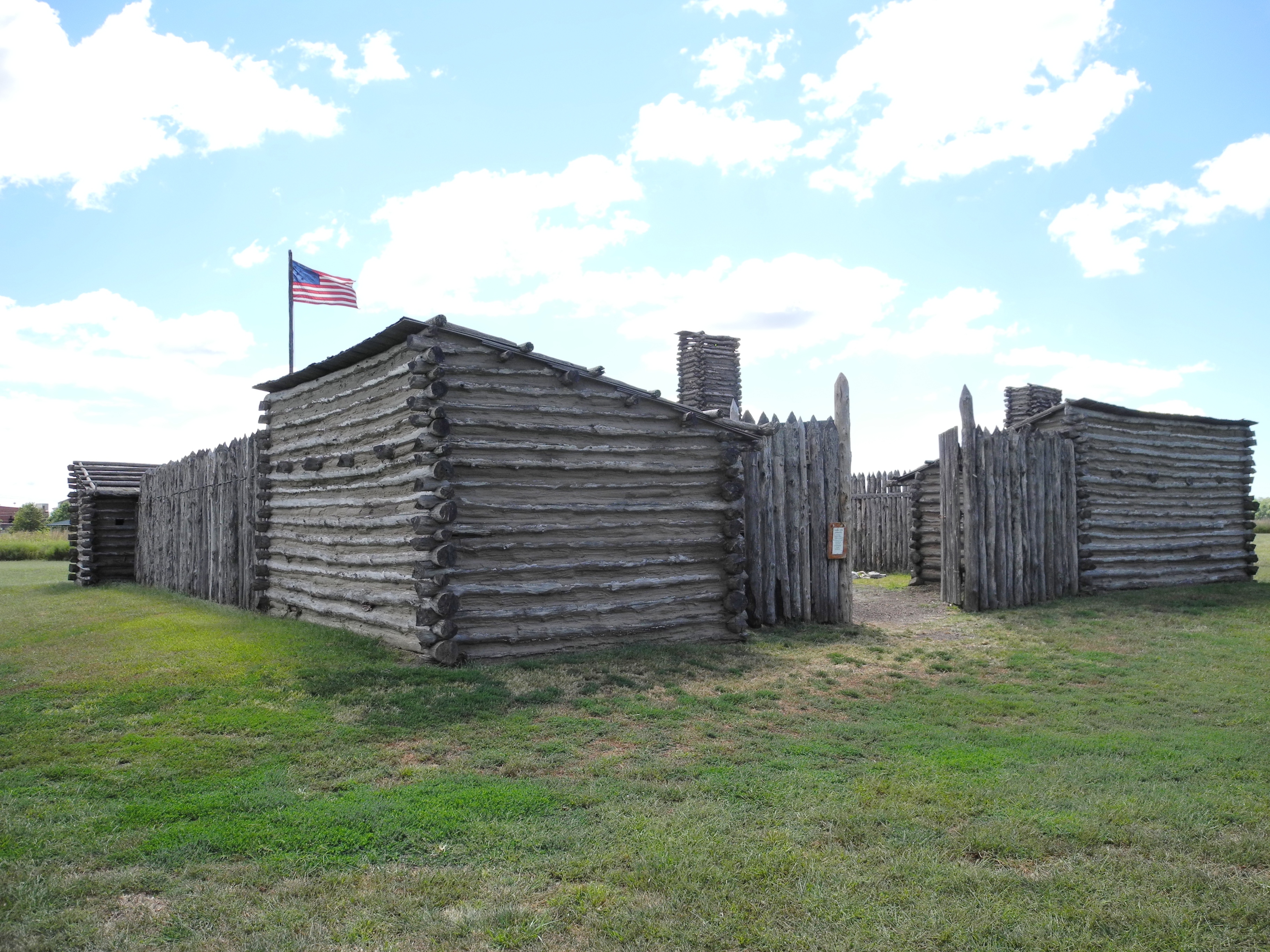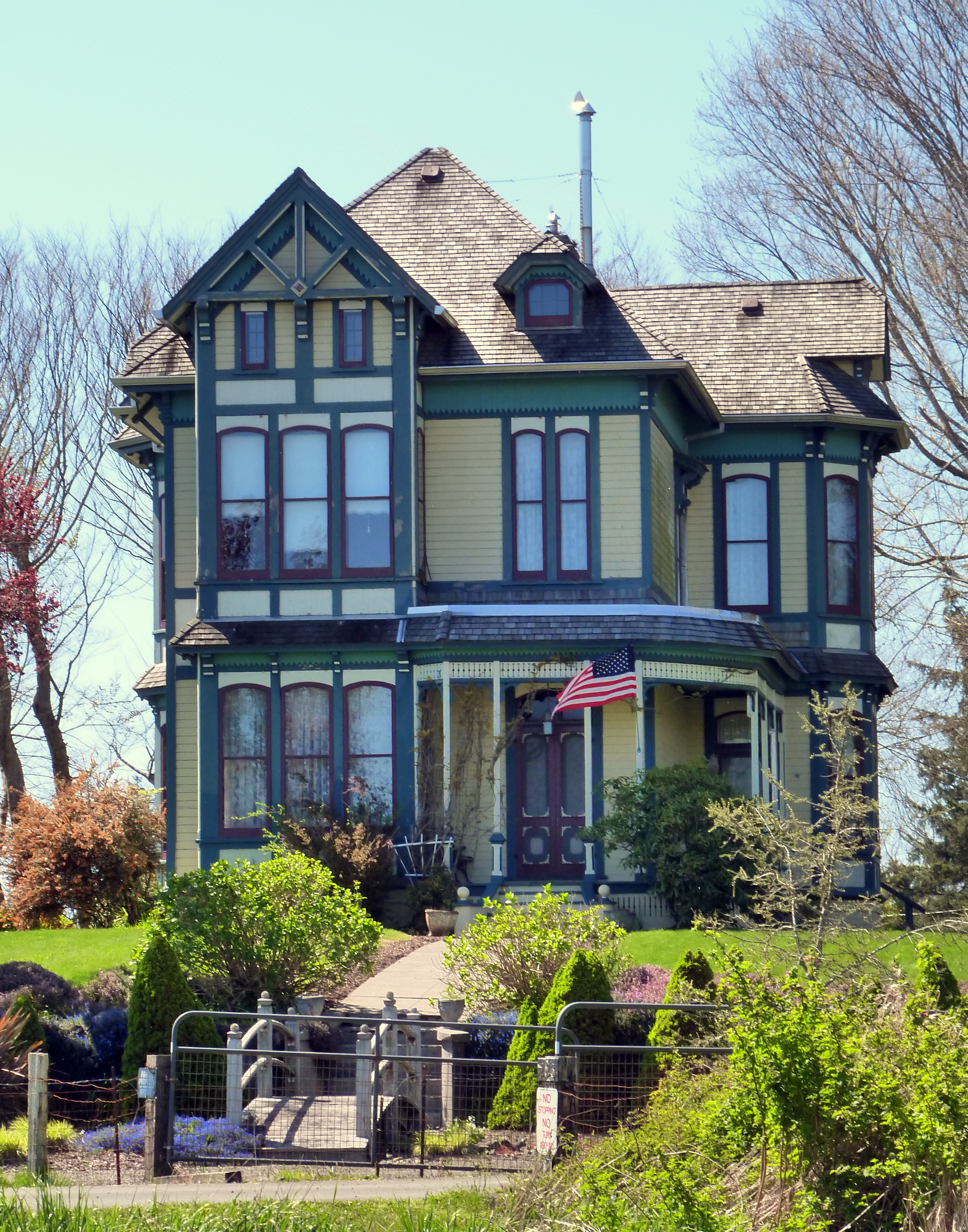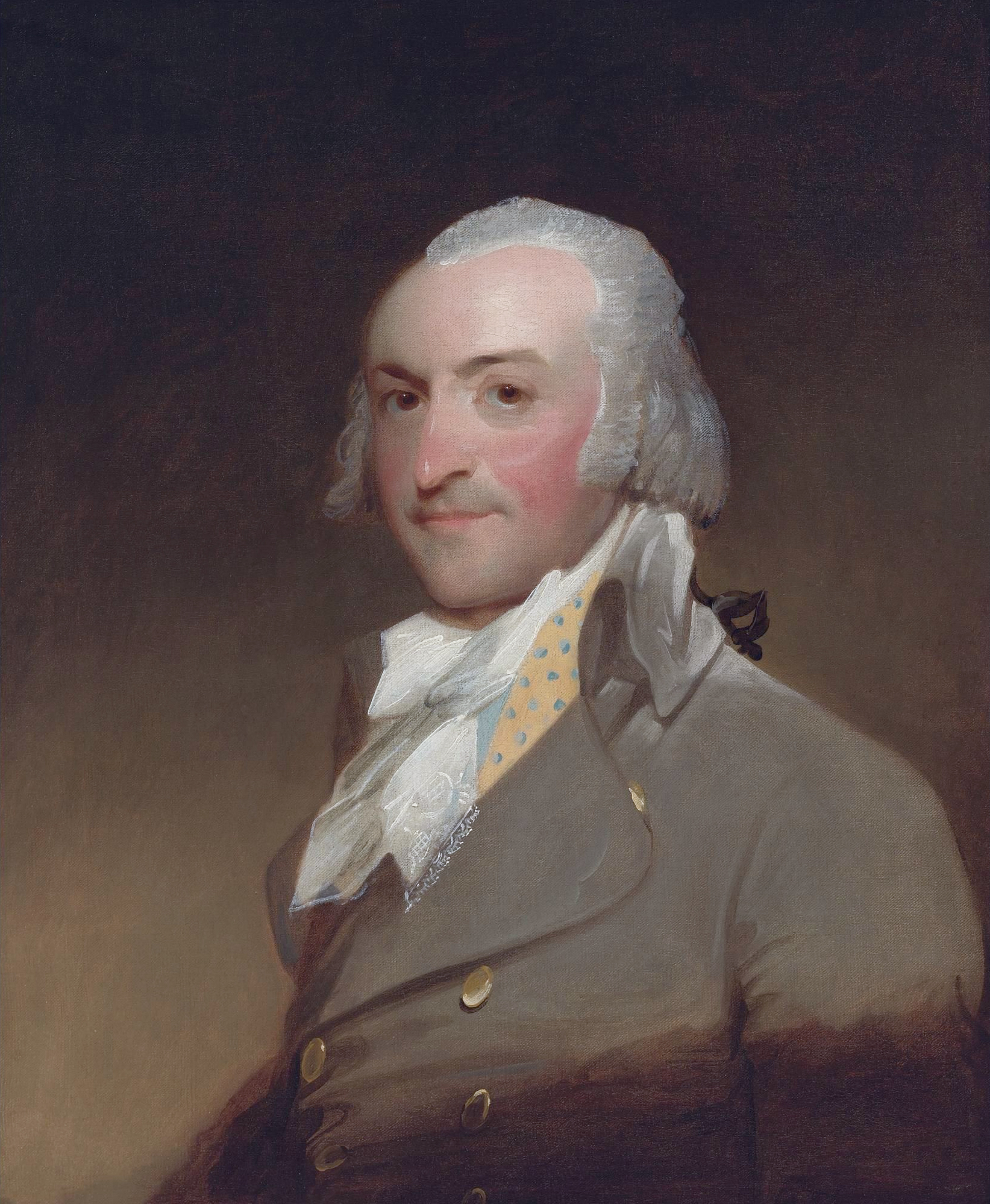|
Astoria, Oregon
Astoria is a Port, port city in and the county seat of Clatsop County, Oregon, United States. Founded in 1811, Astoria is the oldest city in the state and was the first permanent American settlement west of the Rocky Mountains. The county is the northwest corner of Oregon, and Astoria is located on the south shore of the Columbia River, near where the river flows into the Pacific Ocean. The city is named for John Jacob Astor, an investor and entrepreneur from New York City, whose American Fur Company founded Fort Astoria at the site and established a monopoly in the fur trade in the early 19th century. Astoria was incorporated by the Oregon Legislative Assembly on October 20, 1856. The population was 10,181 at the 2020 United States census, 2020 census. The city has a deepwater port, operated by the Port of Astoria, and lies across Youngs Bay from Astoria Regional Airport in Warrenton, Oregon, Warrenton. Astoria is at the western end of U.S. Route 30 in Oregon, U.S. Route 30 and ... [...More Info...] [...Related Items...] OR: [Wikipedia] [Google] [Baidu] |
City
A city is a human settlement of a substantial size. The term "city" has different meanings around the world and in some places the settlement can be very small. Even where the term is limited to larger settlements, there is no universally agreed definition of the lower boundary for their size. In a narrower sense, a city can be defined as a permanent and Urban density, densely populated place with administratively defined boundaries whose members work primarily on non-agricultural tasks. Cities generally have extensive systems for housing, transportation, sanitation, Public utilities, utilities, land use, Manufacturing, production of goods, and communication. Their density facilitates interaction between people, government organisations, government organizations, and businesses, sometimes benefiting different parties in the process, such as improving the efficiency of goods and service distribution. Historically, city dwellers have been a small proportion of humanity overall, bu ... [...More Info...] [...Related Items...] OR: [Wikipedia] [Google] [Baidu] |
Geographic Names Information System
The Geographic Names Information System (GNIS) is a database of name and location information about more than two million physical and cultural features, encompassing the United States and its territories; the Compact of Free Association, associated states of the Marshall Islands, Federated States of Micronesia, and Palau; and Antarctica. It is a type of gazetteer. It was developed by the United States Geological Survey (USGS) in cooperation with the United States Board on Geographic Names (BGN) to promote the standardization of feature names. Data were collected in two phases. Although a third phase was considered, which would have handled name changes where local usages differed from maps, it was never begun. The database is part of a system that includes topographic map names and bibliographic references. The names of books and historic maps that confirm the feature or place name are cited. Variant names, alternatives to official federal names for a feature, are also recor ... [...More Info...] [...Related Items...] OR: [Wikipedia] [Google] [Baidu] |
Fort Clatsop
Fort Clatsop was the encampment of the Lewis and Clark Expedition in the Oregon Country near the mouth of the Columbia River during the winter of 1805–1806. Located along the Lewis and Clark River at the north end of the Clatsop Plains approximately southwest of Astoria, Oregon, Astoria, the fort was the last encampment of the Corps of Discovery, before embarking on their return trip east to St. Louis, Missouri, St. Louis. The Lewis and Clark Expedition wintered at Fort Clatsop before returning east to St. Louis in the spring of 1806. It took just over three weeks for the Expedition to build the fort, and it served as their camp from December 8, 1805 until their departure on March 23, 1806. The site is now protected as part of the Lewis and Clark National Historical Park, part of which was formerly known as Fort Clatsop National Memorial until 2004. The original Fort Clatsop decayed in the wet climate of the region but was reconstructed for the sesquicentennial in 1955 from s ... [...More Info...] [...Related Items...] OR: [Wikipedia] [Google] [Baidu] |
Lewis And Clark Expedition
The Lewis and Clark Expedition, also known as the Corps of Discovery Expedition, was the United States expedition to cross the newly acquired western portion of the country after the Louisiana Purchase. The Corps of Discovery was a select group of U.S. Army and civilian volunteers under the command of Captain Meriwether Lewis and his close friend Second Lieutenant William Clark. Clark, along with 30 others, set out from Camp Dubois (Camp Wood), Illinois, on May 14, 1804, met Lewis and ten other members of the group in St. Charles, Missouri, then went up the Missouri River. The expedition crossed the Continental Divide of the Americas near the Lemhi Pass, eventually coming to the Columbia River, and the Pacific Ocean in 1805. The return voyage began on March 23, 1806, at Fort Clatsop, Oregon, ending six months later on September 23 of that year. President Thomas Jefferson commissioned the expedition, shortly after the Louisiana Purchase of 1803, to explore and detail as much of ... [...More Info...] [...Related Items...] OR: [Wikipedia] [Google] [Baidu] |
Columbia Plateau
The Columbia Plateau is an important geology, geologic and geography, geographic region that lies across parts of the U.S. states of Washington (state), Washington, Oregon, and Idaho. It is a wide flood basalt plateau between the Cascade Range and the Rocky Mountains, cut through by the Columbia River. Geology During late Miocene and early Pliocene times, a flood basalt engulfed about of the Pacific Northwest, forming a large igneous province. Over a period of perhaps 10 to 15 million years, lava flow after lava flow poured out, ultimately accumulating to a thickness of more than 6,000 feet (1.8 km). As the molten rock came to the surface, the Earth's crust gradually sank into the space left by the rising lava. The Columbia River Basalt Group consists of seven formations: The Steens Basalt, Imnaha Basalt, Grande Ronde Basalt, Picture Gorge Basalt, Prineville Basalt, Wanapum Basalt, and Saddle Mountains Basalt. Many of these formations are subdivided into formal and info ... [...More Info...] [...Related Items...] OR: [Wikipedia] [Google] [Baidu] |
Washington (state)
Washington, officially the State of Washington, is a U.S. state, state in the Pacific Northwest region of the United States. It is often referred to as Washington State to distinguish it from Washington, D.C., the national capital, both named after George Washington (the first President of the United States, U.S. president). Washington borders the Pacific Ocean to the west, Oregon to the south, Idaho to the east, and shares Canada–United States border, an international border with the Provinces and territories of Canada, Canadian province of British Columbia to the north. Olympia, Washington, Olympia is the List of capitals in the United States, state capital, and the most populous city is Seattle. Washington is the List of U.S. states and territories by area, 18th-largest state, with an area of , and the List of U.S. states and territories by population, 13th-most populous state, with a population of just less than 8 million. The majority of Washington's residents live ... [...More Info...] [...Related Items...] OR: [Wikipedia] [Google] [Baidu] |
Warrenton, Oregon
Warrenton is a small, coastal city in Clatsop County, Oregon, United States. Named for D.K. (Daniel Knight) Warren, an early settler, the town is primarily a fishing and logging community. The population was 6,277 according to the 2020 US Census. Warrenton is a less urbanized area close to the Clatsop County seat, Astoria. History Prior to the arrival of the first settlers, this land was inhabited by the Clatsop tribe of Native Americans, whose tribe spanned from the south shore of the Columbia River to Tillamook Head. The county in which Warrenton is located was named after these people, as well as the last encampment that the Lewis and Clark Expedition established. Today, a replica of Fort Clatsop still stands just outside of Warrenton city limits. The first pioneers who settled on the land that would become Warrenton (between 1845 and the early 1850s) were Jeremiah Gerome Tuller, J. W. Wallace, D. E. Pease, Ninian A. Eberman and George Washington Coffenbury. Coffen ... [...More Info...] [...Related Items...] OR: [Wikipedia] [Google] [Baidu] |
Astoria Regional Airport
Astoria Regional Airport is a joint civil-military public airport in Warrenton, three miles southwest of Astoria, in Clatsop County, Oregon. The airport is owned by the Port of Astoria and is the home of Coast Guard Air Station Astoria. The airport has no airline flights. Flights to Portland International Airport were most recently provided by SeaPort Airlines from March 2008 until Spring of 2010. Until 1974-75 Astoria had flights on West Coast Airlines and its successors. Federal Aviation Administration records say the airport had 1,851 passenger boardings (enplanements) in calendar year 2008, 1,531 in 2009 and 3,482 in 2010. The National Plan of Integrated Airport Systems for 2011–2015 categorized it as a ''general aviation'' facility based on enplanements in 2008 (the ''commercial service'' category requires 2,500 per year) but it would be categorized as ''commercial service - non-primary'' based in enplanements in 2010. Facilities Astoria Regional Airport cove ... [...More Info...] [...Related Items...] OR: [Wikipedia] [Google] [Baidu] |
Youngs Bay
Youngs Bay, or Youngs River Bay, is located in the northwestern corner of the U.S. state of Oregon. The Youngs River meets the Columbia River at this point, which is situated between Astoria and Warrenton. The bay is named for the Youngs River, which was discovered in 1792 by William Robert Broughton of the Vancouver Expedition. The river was named for Admiral Sir George Young of the Royal Navy. There are two road bridges that cross the bay, with the busiest being the new Youngs Bay Bridge, a vertical-lift bridge completed in 1964, that spans approximately and is a two-lane part of U.S. Route 101 running north to south. There is also the Old Youngs Bay Bridge about two miles to the east, completed in 1921. From 1895 to 1986, a railroad trestle also crossed the bay. Built in 1896 for the Astoria and Columbia River Railway Company, it was later transferred to the Spokane, Portland and Seattle Railway, and finally to Burlington Northern Railroad. It included a swing-type ... [...More Info...] [...Related Items...] OR: [Wikipedia] [Google] [Baidu] |
Oregon Legislative Assembly
The Oregon Legislative Assembly is the State legislature (United States), state legislature for the U.S. state of Oregon. The Legislative Assembly is bicameral, consisting of an upper house, upper and lower chamber: the Oregon State Senate, Senate, whose 30 members are elected to serve four-year terms; and the Oregon House of Representatives, House of Representatives, with 60 members elected to two-year terms. There are no term limits in the United States, term limits for either chamber. Each Senate district is composed of exactly two House districts: Senate District 1 contains House Districts 1 and 2, SD 2 contains HD 3 and HD 4, and so on. (Maps of Senate districts can be found in the Oregon State Senate article.) Senate districts contain about 127,700 people, and are redrawn every ten years. The legislature is termed as a Citizen legislature, "citizens' assembly" (meaning that most legislators have other jobs). Since 1885, its regular sessions of up to 160 days occurred in o ... [...More Info...] [...Related Items...] OR: [Wikipedia] [Google] [Baidu] |
American Fur Company
The American Fur Company (AFC) was a prominent American company that sold furs, skins, and buffalo robes. It was founded in 1808 by John Jacob Astor, a German Americans, German immigrant to the United States. During its heyday in the early 19th century, the company dominated the American fur trade. The company went bankrupt in 1842 and was dissolved in 1847. During the 18th century, furs had become a major commodity in Europe, and Indigenous peoples of the Americas, Indigenous people in North America became a major supplier. Several British companies, most notably the North West Company (NWC) and the Hudson's Bay Company, competed against Astor and capitalized on the lucrative Fur trade, trade in furs. Astor used a variety of commercial strategies to become one of the first Cartel, trusts in American business and a major competitor to the British commercial dominance in North American fur trade. Expanding into many former British Trapping, fur-trapping regions and trade routes, th ... [...More Info...] [...Related Items...] OR: [Wikipedia] [Google] [Baidu] |
Columbia River
The Columbia River (Upper Chinook language, Upper Chinook: ' or '; Sahaptin language, Sahaptin: ''Nch’i-Wàna'' or ''Nchi wana''; Sinixt dialect'' '') is the largest river in the Pacific Northwest region of North America. The river headwater, forms in the Rocky Mountains of British Columbia, Canada. It flows northwest and then south into the U.S. state of Washington, then turns west to form most of the border between Washington and the state of Oregon before emptying into the Pacific Ocean. The river is long, and its largest tributary is the Snake River. Columbia River drainage basin, Its drainage basin is roughly the size of France and extends into seven states of the United States and one Canadian province. The fourth-largest river in the United States by River flow, flow, the Columbia has the greatest flow of any river into the eastern Pacific. The Columbia and its tributaries have been central to the region's culture and economy for thousands of years. They have been use ... [...More Info...] [...Related Items...] OR: [Wikipedia] [Google] [Baidu] |







